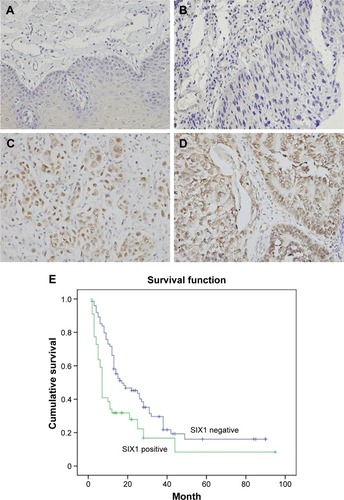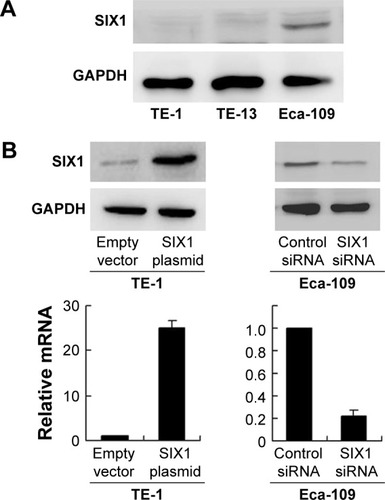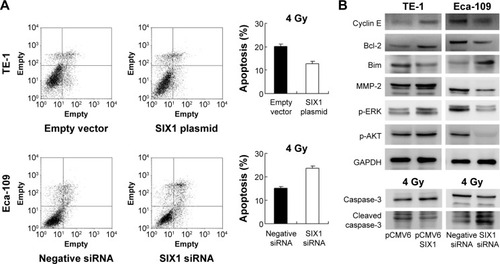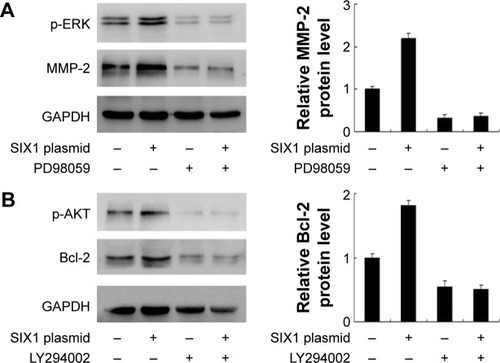Figures & data
Figure 1 Expression of SIX1 protein in esophageal squamous cell carcinoma (ESCC) tissues.

Table 1 Distribution of SIX1 status in esophageal carcinoma according to clinicopathological characteristics
Table 2 Multivariate analysis for predictive factors in patients with esophageal carcinoma (Cox regression model)
Figure 2 Expression of SIX1 in esophageal squamous cell carcinoma cell lines and its transfection and knockdown efficiency.

Figure 3 SIX1 promotes proliferation and invasion in esophageal squamous cell carcinoma cell lines.

Figure 4 SIX1 regulates radiosensitivity and ERK/AKT signaling.

Figure 5 SIX1 regulates matrix metalloproteinase-2 (MMP-2) and Bcl-2 through extracellular signal-regulated kinase (ERK) and AKT signaling.

